KNOWLEDGE GAP
AUTOMAKERS LOOK AT HOW TO BRIDGE CONCERNS FOR THE EV TRANSITION

EXAMINING LENGTHY EV REPAIRS PLUS:
TIPS FOR MAINTENANCE

















AUTOMAKERS LOOK AT HOW TO BRIDGE CONCERNS FOR THE EV TRANSITION

EXAMINING LENGTHY EV REPAIRS PLUS:
TIPS FOR MAINTENANCE
















February 16-25, 2024
Toronto, Ontario

It was all about electric vehicles at the Canadian International AutoShow in Toronto this year. While past shows have had dedicated areas for EVs and automakers have displayed models with the technology, they were now front and centre throughout the show. Automaker unveilings were focused on the latest EV offerings. Genesis took home both vehicle of the year awards in the electrification category, the G80 with the 2024 Canadian Electric Car of the Year and the GV70 with the 2024 Canadian Electric Utility Vehicle of the Year. The Electric City area was available to help provide info about EVs. It included Project Arrow, the Canadian-made concept EV. An indoor EV test track was also available to attendees.



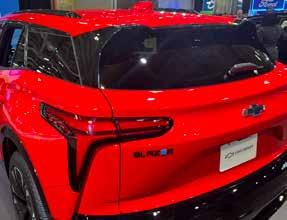
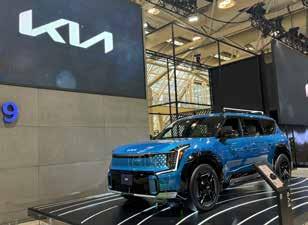





Publisher | Peter Bulmer (585) 653-6768 peter@turnkey.media
Managing Editor | Adam Malik (647) 988-3800 adam@turnkey.media
Contributing Writers | Jack Bartner, David Mayers,
Creative Director | Samantha Jackson
Video / Audio Engineer | Ashley Mikalauskas, Nicholas Paddison
Sales | Peter Bulmer, (585) 653-6768 peter@turnkey.media
Delon Rashid, (416) 459-0063 delon@turnkey.media
Production and Circulation | Delon Rashid, (416) 459-0063 delon@turnkey.media
EV World magazine is published by Turnkey Media Solutions Inc. All rights reserved. Printed in Canada. The contents of this publication may not be reproduced or transmitted in any form, either in part or full, including photocopying and recording, without the written consent of the copyright owner. Nor may any part of this publication be stored in a retrieval system of any nature without prior consent.
Canada Post Canadian Publications Mail Sales Product Agreement No. 43734062
“Return Postage Guaranteed” Send change of address notices, undeliverable copies and subscription orders to: Circulation Dept., CARS magazine, 48 Lumsden Crescent, Whitby, ON, L1R 1G5
CARS magazine (ISSN# 2368-9129) is published six times per year by Turnkey Media Solutions Inc., 48 Lumsden Crescent, Whitby, ON, L1R 1G5
From time to time we make our subscription list available to select companies and organizations whose product or service may interest you. If you do not wish your contact information to be made available, please contact us.
Aquiet revolution is taking shape in Canada's frigid north, particularly on the Yukon's roadways.
According to recent data from S&P Global Mobility, the territory now boasts the third-highest battery electric vehicle market share for new vehicle registrations in 2023. Interestingly, it's tied for third with Ontario (5.9 per cent and it surpasses the country’s most populous province when including plug-in vehicles (9.07 per cent compared to 7.72 per cent). British Columbia and Quebec are well ahead on all counts.
This is an interesting finding. Conventional wisdom has long held that electric vehicles and cold weather don't mix. Battery performance dips in lower temperatures, reducing range and potentially increasing driver anxiety. Yet, the citizens of Yukon are charting a different course, demonstrating a resilience and mindset that merits a closer look.
Firstly, this trend dispels the notion that the effectiveness (or lack thereof) of EVs in colder climates will scare off buyers. However, the Yukon's consumers seem more willing to fit EVs into their lifestyle despite those limitations.
These results would also emphasize the notion that drivers must consider daily use when looking at EVs. There are limitations to range; for those who regularly drive long distances, relying solely on an EV might not be feasible. It’s a matter of convenience and a lack of supporting infrastructure.
But for those who travel short distances daily, an EV is a more appealing decision. This could be a reason for the EV surge in the territory. A majority of the Whitehorse population lives within a relatively small area, rendering commutes shorter — its government reported 74 per cent of working residents as driving fewer than 11 km. Compare that to metro Vancouver where Stats Canada reported a median travel distance of 24 km.
The superior HVAC systems in EVs compared to those in ICE vehicles enhance comfort during cold winter drives, offering another advantage for drivers in harsher climates. So for many Yukoners, an EV can comfortably cover daily travel needs, making it a practical choice despite the cold.
Yet, the Yukon's embrace of EVs amidst cold weather poses significant questions for regions with milder climates but lower EV adoption rates. It suggests that the barriers to EV adoption may be more psychological and informational than technical. Advocates in regions like Ontario, where hesitation still prevails despite more favourable weather, might need to rethink their approach to promoting EVs.
The Yukon’s adoption of EVs illuminates an important lesson: The prevailing negative narrative surrounding electric vehicles, especially about their cold-weather performance, may not hold up against actual daily use case. When evaluated on their day-to-day performance, consumers there appear to believe EVs stand up to the task.
President & Managing Partner
| Delon Rashid Head of Sales & Managing Partner | Peter BulmerCorporate Office
48 Lumsden Crescent, Whitby, ON, L1R 1G5
This is essentially where the line is drawn. EVs in their current state offer advantages for daily, short-distance drives. They don’t compare nearly as well for the scenarios where ICE vehicles offer greater convenience and efficiency.
What Canadians need are proper and accurate conversations about electrification that balance the benefits and challenges.
Adam Malik Managing Editor, EV World
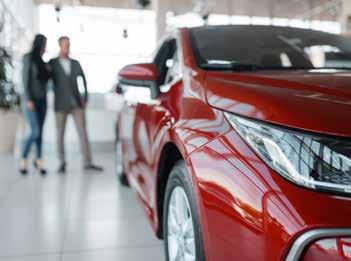
ZERO-EMISSION VEHICLES entering Canadian roads finished 2023 well ahead of where they placed the year before, with the fourth quarter holding on to gains made throughout the year.
And there’s perhaps an unexpected region of Canada that ranks third in EV adoption in the country.
Overall, ZEVs accounted for 11.7 per cent of new vehicle registrations last year, up from 8.9 per cent in 2022, according to S&P Global Mobility’s fourth quarter and year-end Canadian Automotive Insights report.
Breaking things down by category, battery electrics made up 8.8 per cent of new registrations in 2023 (up from 7 per cent in 2022) while plug-ins accounted for 2.8 per cent (1.9 per cent in 2022). Hybrid electric vehicles were 10.7 per cent of the market last year, compared to 7 per cent the year before.
Internal combustion engines accounted for 77.6 per cent of new registrations in 2023, down from 84.1 per cent the previous year.
However, after three straight quarters of growth, ZEV sales were generally flat from the third to fourth quarter but some regression nevertheless. BEVs went down a tenth of a percentage point to 10 per cent, plug-ins were flat at 3.2 per cent and hybrids dropped fourtenths of a point to 11.2 per cent in Q4 2023.
S&P highlighted that volume increases in the final quarter were led by Audi’s Q4 E-tron and the VW ID.4. For the year, the Tesla Model Y and Mitsubishi Outlander led in volume increase with the Model Y representing nearly 20 per cent of the market.
And the market is set to see many new options making an entrance.
“Looking ahead for 2024, we anticipate the launch of several battery electric vehicles in Canada, including the Tesla Cybertruck, GMC Sierra EV, Audi Q6 E-TRON, Kia EV3 and Honda Prologue, among others,” the report stated. “The plug-in hybrid electric vehicle market is also set to expand with the introduction of models such as
the Mazda CX-50, Hyundai Santa Fe, Ford Ranger, and Volkswagen Golf, to name a few.”
Going by province, British Columbia leads the country again in adoption rates with nearly 23 per cent of new registrations a ZEV. Quebec, however, made significant strides, jumping from 13 per cent ZEV registrations in 2022 to more than 20 per cent.
When looking strictly at BEVs, B.C. (18.8 per cent) and Quebec (15.2 per cent) one again lead the way.
But the Yukon ranks third — tied with Ontario — at 5.9 per cent BEV registration share. That number is up 2.6 points from 2022. With ZEVs overall, the territory saw 9 per cent of new vehicle registrations in that category.
Ontario saw very little growth in both ZEV (7.72 per cent, up 0.81 points) and BEV (5.9 per cent, up one-tenth of a point) adoption rates.
In the Atlantic provinces, Nova Scotia (138.2 per cent), New Brunswick (105.2 per cent) and Prince Edward Island (133.9 per cent) all saw large year-over- year growth rates.
The Chevrolet Bolt EUV emerged as the top ZEV model in Quebec. Compare that to British Columbia, where the Tesla Model Y holds the highest registration volume across all models.
“This disparity in Quebec could be a key factor behind Tesla’s decision to reduce the price of Model Ys in an effort to gain more market share,” S&P observed.
QUEBEC WILL REMOVE rebates for electric vehicles and plug-in hybrid vehicles by 2027.
The provincial government said that they no longer need to incentivize consumers to buy zero-emission vehicles in a budget announcement. When introduced in 2012, the incentive “was necessary to begin the electrification of the vehicle fleet in Quebec at a time when there were few models available, with more limited capacity, and when the charging network was emerging.”
According to the government, there are 240,000 EVs on Quebec roads. One in five new vehicle registrations in Quebec in 2023 were ZEVs.
Incentives for new EVs and fuel cell vehicles will drop from $7,000 this year to $4,000 next year and $2,000 in 2026 and unavailable in 2027.
Plug-in hybrids will see incentives go from $5,000 to $2,000 to $1,000 before being eliminated.
Used fully electrics will drop from $3,500 now to $2,000 next year and $1,000 in 2026 before no longer being available the following year. The $600 home charging incentive will remain available into 2027.
In 2022, the government reduced the incentive from $8,000.
The Canadian Automobile Dealers Association expressed “its
deep concern” over the government’s decision in its budget and is calling on the province to reconsider the move.
“This decision comes at a time when Quebecers are facing a major affordability crisis, making purchase rebates absolutely necessary for the eventual attainment of the ZEV standard imposed by this same government,” its statement said.
RECENT CRASH TESTS conducted by the University of Nebraska have highlighted a significant safety concern: Electric vehicles, which are typically heavier than their gasoline counterparts, are capable of crashing through steel highway guardrails not designed to withstand their extra force.
This revelation raises alarms about the effectiveness of the nation’s roadside safety systems in the era of electric mobility.
Electric vehicles, owing to their heavy batteries, weigh approximately 20 per cent to 50 per cent more than internal combustion engine vehicles. This added weight, combined with a lower center of gravity, means that traditional steel guardrails may not be sufficient to halt these vehicles during a crash.
This was starkly demonstrated last fall when engineers at Nebraska’s Midwest Roadside Safety Facility observed a nearly 4-ton 2022 Rivian R1T electric pickup truck effortlessly break through a metal guardrail during a test, only coming to a halt upon colliding with a concrete barrier yards away.
“Guardrails are kind of a safety feature of last resort,” noted Michael Brooks, executive director of the nonprofit Center for Auto Safety.
Furthermore, a preliminary crash test involving a Tesla sedan demonstrated that the sedan was able to lift the guardrail and pass under it, further indicating that current barrier systems might not be effective against heavier electric vehicles.
The primary contributor to the increased weight of EVs is the large batteries required to power them for approximately 300 miles per charge.
THINK ABOUT THE amount of labour that goes into working on an internal combustion engine. If you’re not already capturing the value of that labour in your current labour rate, you may be in for some hurt when electric vehicles start showing up at your door, suggested a shop coach.
High costs of repair are pushing rental giant Hertz to sell off its electric vehicle rental fleet in favour of internal combustion engines

for its customers.
In all, Hertz plans to sell 20,000 EVS, about a third of its entire EV fleet. They will use the money to buy gas-powered vehicles for consumers to rent.
“Collision and damage repairs on an EV can often run about twice that associated with a comparable combustion engine vehicle,” Hertz CEO Stephen Scherr said during an analyst call.
Furthermore, as EV prices decline in the new car market segment, the resale value of Hertz’s used EV rental cars are being pushed down.
“The MSRP declines in EVs over the course of 2023, driven primarily by Tesla, have driven the fair market value of our EVs lower as compared to last year, such that a salvage creates a larger loss and, therefore, greater burden,” Scherr said.
However, industry observers noted that Hertz selling off the EVs will give consumers another avenue to purchase an EV at a discounted rate.
In an Securities & Exchange Commission filing, Herz said it expects to take a $245 million loss due to depreciation on the EVs — an average of about $12,250 per vehicle.
Tesla makes up about 80 per cent of Hertz’s EV options, which total about 11 per cent of the company’s rental fleet.
A SHOP DEBATING if it should invest in being able to service the electric vehicle market needs to wrap its head around the costs, experts advised.
EVs require significant investment and new infrastructure to get up and running — anywhere from about $140,000 to $280,000, estimated advisory firm Roland Berger.
To service EVs, shops need to invest in chargers first. Neury
Freitas, partner with Roland Berger, recommended fast chargers to quickly have vehicles ready to go. There are infrastructure costs, such as installing transformers to handle the higher load. There is significant training required of staff. New tools and equipment will be needed, such as lifts that can handle the extra weight of an EV.
Another consideration Freitas pointed out, is the physical space available in shops. When removing the battery from an EV, it will take up the space of an entire bay, in addition to the bay the vehicle is currently in.
Some shop owners may be shocked by the numbers. Roland Berger partnered with the Midwest Auto Care Alliance to ask shops how much they thought an investment in each space would cost. Four in 10 (42 per cent) expected investment to total between $14,000 and $28,000. About a third (32 per cent) said in the $70,000$140,000 range.

BARRING SOME SIGNIFICANT change, one industry observer doesn’t believe battery electric vehicles will ever be affordable enough for most Canadians to buy brand new.
Speaking at the Canadian Black Book Talk Auto conference near Toronto in the fall, Guido Vildozo, senior manager of light vehicle sales forecasting for the Americas at S&P Global, warned that if BEVs can’t get under a certain price tag, many Canadians won’t be able to buy one from the dealer.
“Battery electric vehicles will not be affordable,” he said. He said the lowest potential price point that he sees a BEV getting to is $25,000. That’s not the reality today. But at some point in the future, that’s where he sees the bottom end of the price spectrum ending up.
“If that’s the case, then we wouldn’t be able to cater to roughly about 40 per cent of the market. That’s a very scary number,” Vildozo said. “If we talk about the fact that the potential for
Canada is 2.2 million units, and then we take out 40 per cent, we would probably have to close a bunch of dealerships.”
THERE’S A LOT the automotive industry and society as a while doesn’t know about EVs due to their infancy. For the automotive aftermarket, there are questions about their lifespan. It’s unknown if they will prove to be reliable vehicles in the long term.
“We don’t know how well they’re going to perform in the used vehicle fleet because we’re just starting to see them move that way in volume; they’re just starting to get old enough,” said Todd Campau, aftermarket practice leader at S&P Global Mobility. “We also don’t know how long they’re going to live overall, or how many owners they’re going to see overall. There’s assumptions that they’re going to behave like internal combustion vehicles, but that’s just assumptions right now, What if they don’t last for 20-plus years?
He raised the concerns during the presentation, Trends Impacting the North American Aftermarket at AAPEX in the fall. Average vehicle age in the U.S. is 12.5 years (and estimated to be 10.5 in Canada). So there are a lot of 16-20-year-old vehicles on the road right now. And right now, it’s higher-income households that are buying EVs as they’re the ones who can afford them.
“So what if these vehicles don’t last? What if they don’t flow through the market like their internal combustion counterparts always have? What’s the social impact if there’s not an EV for a lower-income household to buy after it’s been owned for 10 years by the new owner?” Campau wondered. “So these are all questions that we’re wrestling with.”
THE RECENT CES EVENT showcased how automakers and suppliers are looking at ways to lightweight electric vehicles to help boost range and curb range anxiety.
Today's lithium-ion batteries can only take EVs so far. The BBC explored lightweighting strategies being undertaken to improve in this area.
"Every ounce of that weight reduction improves range," Andrew Poliak, U.S. chief technology officer of Panasonic Automotive, told the BBC.
It reported that the company says it has developed components like speakers and audio system used in EVs that weight 30-60 per cent less. And they draw 60 per cent less power from the vehicle without affecting performance.
Honda is looking at the battery itself to shed weight. It’s
going down the path of solid-state batteries, which are smaller and lighter than the lithium-ion ones you’d find in most electric vehicles today. Solid-state can charge faster and is less susceptible to heat-related damage from fast-charging.
That, in turn, brings added benefits. Not having to worry about overheating means removing the safety measures in place for it, thus further lightweighting the vehicle.
"When you add weight to the vehicle, it means you need a bigger battery to attain the same range," Honda spokesperson Chris Martin told the BBC. "It has a cascading effect because of the vulnerability of lithium-ion batteries. If you can remove that vulnerability, you can reduce vehicle weight and put batteries in new locations. If you wanted to keep the vehicle the same way, you could theoretically take out some of the crash structure that was just protecting the battery — not the people — and put in more battery."
KIA HAS REVEALED a new electric compact SUV called the EV5 and confirmed that it will be sold in China, South Korea, Canada and Mexico — not the United States, It explained that the SUV won't make it to the American market due to the manufacturing-related intricacies of the Inflation Reduction Act of 2022, which altered how EVs sold in the U.S. are incentivized.
FOR ELECTRIC VEHICLES to get from about 10 per cent of sales to 100 per cent is going to take a lot of work, warned the head of Canada’s automakers group.
“It can happen but a lot of things have to happen immediately and we need to see a lot more urgency from governments to make that target achievable,” Brian Kingston, president and CEO of the Canadian Vehicle Manufacturers’ Association, at the Canadian Black Book Talk Auto event last fall.
He wants to see a properly laid out plan as to how full electrification will be achieved.
“It feels like the targets are being set in a bit of a vacuum: Let’s just set the target is ambitious, it looks great. And then we’ll figure out how to get there later. Well, that doesn’t work for us,” Kingston said. “If you’re going to set a target, we need to understand how you’re actually going to achieve it first, and then determine whether or not it’s feasible.”
One is better purchase incentives. There’s still too much of a price gap between the same ICE and BEV models.
“Canadians are facing serious affordability challenges right now due to higher interest rates and a range of other challenges,” Kingston said. “You’re not going to shift a large portion of Canadians into an electric at a higher price point on the basis and the promise
that they’ll save more money on gas.”
Second is better charging infrastructure. Even though about 1.4 per cent of vehicles in operation are electrified, there are many complaints about public chargers.
“We constantly hear stories from drivers about challenges that they have: Access to convenient public fast, reliable charging infrastructure. So that that barrier has to be removed,” Kingston said.
Education is an important component of the transition. His group fields a lot of questions around battery degradation, range and cold weather operation.
“There’s still a lot of questions that people have legitimate questions,” he said.
Creating a strong battery supply chain is the last major component of the transition. It will need to supply a lot of vehicles in a short amount of time.
“So is 100 per cent [electrification] achievable? It is but all of those things need to come together in a very, very short period of time,” Kingston said.

A RECENT REPORT IS warning that there are signs of trouble with electric vehicle sales in the United States.
While acknowledging that EV numbers are and will continue to increase on the road, an analysis from Lang Marketing observed that evidence grows that its rise will be a longer process than initially thought — and maybe won’t even occur.
"Dark clouds are casting shadows over the once sunny picture of electric vehicles filling U.S. roads and reducing pollution,” said its Aftermarket iReport.
The rise of EV models has been well documented. It’s been predicted that North America will have 135 models for sale by 2025 and 500 globally.
“There’s not yet a full range of vehicle types that people need
particularly around that lower, entry-level threshold,” observed Nino Di Cara, founder and president of Electric Autonomy Canada, in the inaugural issue of EV World.
But up until this point, EV sales are not where many proponents would hope them to be. The Mobility Consumer Index from business advisory firm EY placed EV interest — battery, hybrid and plug-in — at 48 per cent among Americans, below the global average of 55 per cent and behind Canada at 52 per cent.
Lang pointed to five factors creating a bumpy path for EVs to grow rapidly: Ballooning inventories, price cutting, spotty resale value, a challenging and untested secondary market for EVs and a sharp decline in projected EV sales.
As noted, EV model options are set to boom in the next 18 months. Lang warned that supply will outstrip demand.
“This is worrisome since a flood of new EV models will reach dealers’ showrooms over the next 18 months, requiring a super spike in demand to avoid a disastrous supply glut,” the report said. “So far, even before the flood of new EV models, demand is not keeping pace with growing shipments of EVs to dealers.”
So, price cutting seems to be the next step. Tesla did this recently. “While this might be effective in the short run, it is a body blow to many EV owners who have seen their recently purchased EVs decrease in value due to price cuts,” Lang observed.
Meanwhile, EVs depreciate in value quickly due to range and safety issues when compared to similar internal combustion engine models.
“This has implications for the attractiveness of new electric vehicles to potential buyers at a time when a flood of new EV models is set to hit dealer showrooms,” the report said.
The secondary market is of concern as most vehicles on roads today are driven by second owners. Potential second owners may avoid EV options as comparable ICE versions may be more preferred.
So sales projections are being reduced. Lang observed that while some analysts expected EV would make up half of new vehicles by 2030, that number has been cut to 35 per cent, and perhaps even lower.
“Even if EV sales reach 35 per cent of new car and light truck volume by 2030, which is unlikely, their impact on the VIO and aftermarket product sales will remain limited for a number of years beyond,” Lang’s report said.”
ZERO EMISSION VEHICLES are gaining the most momentum in the passenger vehicle space through plug-in hybrid and battery electric vehicles. But hydrogen could make a leap forward this year. That said, there are challenges in bringing fuel cell electric

vehicles to the mainstream, according to the report, Fuel Cell Electric Vehicles 2024-2044. authored by James Edmondson, principal technology analyst at U.K.-based consultancy firm IDTechEx.
It noted that BEVs had a big year in 2023, predicting more than 10 million of these vehicles being sold around the world.
FCEVs only represented 0.2 per cent of ZEV sales in 2022 and even that was a drop off from the previous year.
“Despite the benefits of long-range and quick refuelling, FCEV cars have not made anywhere near the progress of BEVs,” IDTechEx’s announcement said.
Leading the way in the struggle have been the lack of hydrogen refuelling infrastructure, the cost of hydrogen and the upfront cost of the vehicles.
“Any success so far has been bolstered by hefty government and OEM incentives, where the upfront cost of the car is heavily subsidized and, in some cases, the cost of fuel was covered for a period of time,” IDTechEx said.
When estimating costs of diesel, electricity and hydrogen in California in 2023, a Tesla Model 3 could cost around US$0.04/mile to run in comparison to a Toyota Mirai, an FECV, at US$0.21/mile. That’s even more expensive than an internal combustion engine vehicle at US$0.15/mile.
“There will be significant variations in these figures depending on many factors, including the region, but given the greater upfront cost for FCEVs over both combustion engine vehicles and BEVs, an increased running cost makes an FC car a hard sell for consumers,” IDTechEx said.
It noted another major concern: The lack of hydrogen filling stations. As of June 2023, IDTechEx noted, there were only about 1,100 stations globally.
“While this is over double what it was in 2019, it is not enough for consumers to be comfortable with refuelling,” IDTechEx observed.
The group does expect FCEV car sales to grow in the long term. “FCEVs will remain a very small portion of the zero-emission passenger car market,” it said.

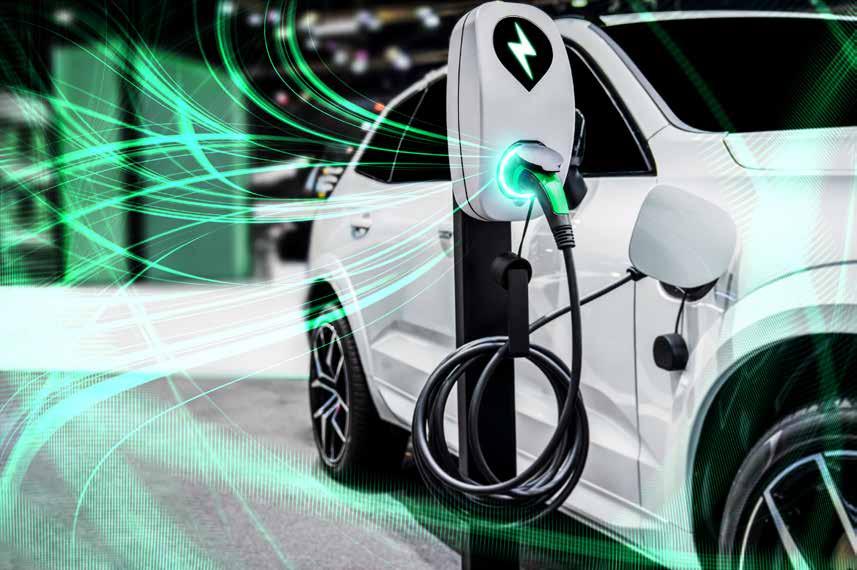

Scan the QR code to listen to the EV World Magazine Enhanced Media segment.

explore the challenges in getting more Canadians behind the wheel of an electric vehicle //By
Adam MalikConsumer interest in electric vehicles jumped in 2023. In fact, zero-emission vehicles overall saw a greater market share of new vehicle registrations last year.
Data from S&P Global Mobility’s fourth quarter and year-end Canadian Automotive Insights reported ZEVs accounted for 11.7 per cent of new vehicle registrations last year, up from 8.9 per cent in 2022. BEVs accounted for 8.8 per cent while plug-ins made up the remaining 2.8 per cent. Both sets increased form the year before. Hybrids were 10.7 per cent of the market last year, compared to 7 per cent in 2022.
That means internal combustion engines saw its share drop from 84.1 per cent in 2022 to 77.6 per cent last year.
So EVs and alternatives to ICE vehicles are continuing to resonate with buyers in Canada. But that doesn’t mean the path to becoming a fully electrified society is without its bumps.
There is still a large knowledge gap between fact and fiction when it comes to electric vehicles in Canada.
“We still get questions about electric vehicles and battery degradation, range, cold weather operation,” said Brian Kingston, president and CEO of the Canadian Vehicle Manufacturers' Association. He was speaking at TalkAuto, a gathering of automotive professionals representing the dealer, OE and new vehicle supply segments of the industry.
“There's still a lot of questions that people have legitimate questions,” he added. “So there's more to be done on education to explain the technology and help many people made the switch.”
Representatives from several automakers agreed with this sentiment this recently. They acknowledged that consumer education is something they need to work on as electrification moves forward. At the Canadian
˝Part of introducing that vehicle is definitely educating consumers on what it´s like to live with a battery electric vehicle.˝
International AutoShow this year, EV World spoke to representatives from Chevrolet, Stellantis, Ford and Volvo about electrifying the Canadian car parc.
Holly Broome, national marketing manager of Chevrolet cars and crossovers, emphasized the important role of education in overcoming range anxiety and other consumer concerns holding Canadians back from making the switch to electric.
“We have to do a lot more education to help customers understand what owning an EV is really like,” she said.
For example, most charging is done at home, reducing pressure on public infrastructure.
“Once folks realize that, it puts less pressure on needing to understand the infrastructure when they’re out and about on the road.”
Stellantis has put out its first fully electric vehicle, the Fiat 500e.
“Part of introducing that vehicle is definitely educating consumers on what it’s like to live with a battery electric vehicle,” explained Brad Horn, product communications manager at Stellantis Canada. “It’s even started with things like educating people on how the federal EV incentives or the provincial ones because that vehicle is going to be introduced in B.C. and in Quebec first.”
The company now plans to have half of its vehicle sales be electric by 2030.
“So while we will build the EVs and market them — we have six of them coming this year — there will still definitely be internal combustion, or PHEV vehicles in our lineup. It’s going to be sort of a mix, and it will have something that will address everybody’s wants.”
And there’s Volvo, which will fully electrify its fleet by 2030.
“Our purpose as a company [is to] provide freedom to move in a personal, sustainable and safe way,” observed Matt Girgis, managing director of Volvo Car Canada. “And we just see the natural evolution of our safety DNA, transitioning into sustainability, which, of course, a big part of that is to reduce tailpipe emissions. So this is our 'Ambition 2030.' And we’re committed to that.”
As for the education concept, he noted that the early adopters have bought their EVs and now it’s time to attract the next group of buyers.
“We do see that there is a bit of anxiety still around range, around accessibility,” he said about the next group of buyers.
Over at Ford, they say they understand what the issues are and they’re working to address those concerns.
“So if we take range, for example, so we’re always working on our product to improve range,” said Alexa Desjardins, vehicle line manager for BEV and commercial vehicles, at Ford Motor Company of Canada. “So our engineers are so focused on driving
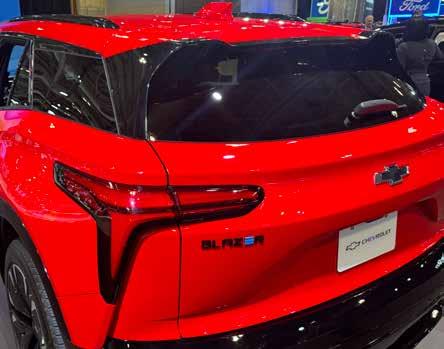

every single kilometre of range that we can get in our vehicles, and we give it to our owners. It’s not just in the new products. We give it through over-the-air updates as soon as there are updates.”
She pointed to range concerns and consumers being so focused on how far a vehicle can go on a single charge rather than assessing daily use case where people will generally travel far less than the occasional road trip. Nevertheless, options are expanding for longer road trips,
“And now we just made a deal with Tesla, where we’re going to unlock 15,000 Superchargers in the spring for our customers,” Desjardins said. “And so we’re always looking at improving our customer experience from a charging perspective.”
There is a shortage of automotive repair technicians. The industry knows this. But it seems other sectors are still wrapping their heads around it. And when there’s a shortage of technicians to meet the demands of he industry, repair costs escalate.
Take, for example, rental car company Hertz. It added Tesla vehicles to its fleet for its customers. But they recently announced they’re dumping many EVs, citing the high repair costs associated with the vehicle type.
“Collision and damage repairs on an EV can often run about twice that associated with a comparable combustion engine vehicle,” then-Hertz CEO Stephen Scherr said during an analyst call. He resigned from the company after this debacle.
The insurance industry is also realizing this. Owners of EVs are looking to face higher premiums to insure an EV. Morningstar DBRS warned this could happen if trends in the United Kingdom cross over to Canada.
Despite EVs typically having lower maintenance costs than their gas-powered counterparts, the expensive nature of repairs and a shortage of skilled technicians could elevate overall
costs, subsequently impacting insurance claims and premiums. Insurance companies reassess premiums annually, taking into account factors such as repair costs, theft, inflation and claims experience.
This would be of no surprise to Kevin FitzPatrick, senior vice president at OPUS IVS. In an episode of Auto Service World Conversations, he explained the many issues plaguing EV repair. With the lack of talented industry professionals, those who can service and repair EVs are charging more for their time.
For better or for worse, “I think people are going to take advantage of that,” FitzPatrick said.
Girgis from Volvo noted that his company sees the same issue themselves.
“We see it in our industry like everybody else does. Everybody else [knows it's] difficult to get technicians, difficult to get people in general,” he said. “So we're working with our dealers on different clever ways to help support them to retain talent to get more technician all those kinds of things.”
A way for the market to correct itself is to have more of the aftermarket be a willing participant in the area. But the unwillingness of the industry to get involved is a concern for FitzPatrick.
“You know, if you take 100 shops, you’re probably going to find about 85 of them that are unwilling right now to work on EVs,” he said. “And that’s, that’s just a stark reality. It’s a bit of dedication, you have to get trained — I mean, these vehicles are no joke. They can hurt you. You have to take some extensive training in order in order to work on them. You have to tool your shop to work on them, you have to have a technician that spent multiple days in training. And it’s a bit of a commitment.”
Currently, high insurance premiums for EV owners have not become a widespread issue in Canada, thanks in part to the gradual adoption rate of electric vehicles, DBRS reported.
And the problem of repairability is common among other BEV brands. Chris Sutton , J.D. Power's vice president of


automotive retail, noted the subpar service experience for nonTesla owners in his company’s 2024 U.S. Customer Service Index Study.
He emphasized the urgency for automakers and dealers to address these issues as the market shifts from early adopters to more typical consumers who are less forgiving of inadequate service.
“On the manufacturer side, a higher rate of BEV recalls is also contributing to an inconsistent experience,” he said. “This is an area that automakers and dealers need to address now to help make the transition to electrification as pain-free as possible for owners in the future.”
Despite consumer concerns, repair issues and potentially higher insurance costs associated with EVs, automakers remain committed to providing solutions to consumers so that they can find the EV that fits their needs.
Even though the early adopters have generally bought their EVs, there’s the next segment of the market to capture, Chevrolet’s Broom pointed out. She recommended anyone unsure about an EV to try one before they decide.
“Try it. Call the dealership,” she said. “We have 400 Chevrolet dealerships across Canada that are eager and ready and waiting to talk about EVs.”
It’s a sentiment Desjardins from Ford echoed, calling EVs a “life changing” experience. She noted that the vast majority of EV owners wouldn’t go back to a gas-powered vehicle.
“So once you drive it and you understand what your dayto-day is — because it is a change in how you think about charging, range, what your next stop is — but once you understand that, and through education, it is such a great experience,” she said.
At Stellantis, Horn also touted the benefits of real life testing of EVs to win over the skeptics. Even sharing the experiences
of those with an EV can be beneficial. For example, a colleague has been travelling back and forth to Michigan regularly with an EV. Despite initial concerns, the colleague has come around.
“I think there is definitely going to be some word of mouth from those early adopters that is going to comfort some of the concerns of people,” Horn said.
When people realize the reduced maintenance and ability to make repairs over-the-air, Volvo’s Girgis said that would be a big selling point.
“I would say that we're evolving the product in line exactly with what the consumer demands are, which is less maintenance required more convenience, more accessibility,” he said.
Product variety will also help. Horn noted the several models his company will be releasing to give consumers more options that fit their lifestyle, from small vehicle to pick up trucks.
“So as these BEVs come out — and they're not niche and they start filling in these segments — and, again, people start to purchase them and live with them and speak about the positive experience, it’s going be … a rising tide lifts all boats.”
And they emphasized their commitment.
“Our dealership network is committed to electric future and we're excited for what it has to come,” Broom said.
Desjardins noted the challenges of balancing production, consumer demand and cost, “but one that we're really committed to. It's for its key priorities to build an enduring EV business.”
Volvo’s commitment may stand above the rest with their 2030 goal of full electrification.
“It sends the message that we're living out our brand purpose. We're committed to deliver on what we said,” Girgis said. “Of course, we understand that markets evolve. Consumer demands change. There's many reasons for that. But for us, it's important to keep our eye focused on the end goal managed through the peaks and troughs there and ultimately deliver, by 2030, fully electric cars to all of our consumers around the globe.”
Consumers face many challenges around EV service and repair. Here’s an in-depth analysis of the key issues
Electric vehicles (EVs) provide environmental benefits, enhanced technology and lower fuel costs. But repair shops and fleet operators are facing a pivotal moment as EVs become increasingly prevalent.
Although some repair shops have successfully transitioned, many continue to struggle with effectively servicing EVs due to their unique requirements.
Unlike traditional internal combustion engine vehicles, EVs are equipped with intricate electronic systems, high-voltage components and specialized battery technology. Addressing these challenges requires highly skilled technicians well-versed in EV diagnostics, repair procedures and safety protocols, alongside a developing supply network aimed at minimizing maintenance and repair delays.
Let’s review the various factors contributing to EV repair delays and the challenges faced by technicians, facility operators, manufacturers, and consumers.
Compared to traditional auto repair facilities, the infrastructure for servicing EVs is still evolving. Many repair shops may lack the specialized equipment, charging stations, proper location or certified technicians to effectively manage EV diagnostics and repairs. This can lead to longer wait times as owners travel to authorized service centers or wait for mobile technicians to become available, especially in areas with limited EV adoption.
EV repairs involve stringent safety protocols due to the high-voltage systems present in these vehicles. Technicians and repair facilities must adhere to strict safety guidelines to prevent
accidents or damage to the vehicle and personnel.
Technicians require specialized training to diagnose and troubleshoot issues unique to electric vehicles. This includes handling electric components and following manufacturerrecommended procedures. Furthermore, technicians need an understanding of high-voltage systems, battery management, regenerative braking, electric motor operation, heating and cooling systems as well as using insulated tools and personal protective equipment.
Enhanced diagnostic skills can expedite the identification of problems, leading to faster repair turnaround, increased local billable hours and often lower cost as well as inconvenience to the customer.
One of the primary reasons for EV repair delays is the intricate supply chain involved in sourcing parts and components.
Unlike traditional internal combustion engine vehicles, EVs rely on specialized batteries, electric motors and electronic systems, which may not be readily available in local markets. This can lead to extended wait times as repair shops and manufacturers struggle to procure the necessary parts, especially for less common models or older EVs.
As we know, this is not isolated to EV and Hybrid vehicles as many new vehicles have experienced computer chip and other component delays leading to new vehicle delivery periods that can be as much as 24 months. The pandemic can’t only be blamed for these issues: I purchased a new 2019 Ram 1500 — although an excellent vehicle, I waited almost four months for a
windshield and over six months for a replacement stereo system which is integrated with the navigation system, requiring the entire unit be replaced. This leads to our next factor.
The advanced technology powering EVs presents a doubleedged sword. While it offers superior performance and efficiency, it also increases the complexity of repairs.
Unlike conventional vehicles with familiar mechanical systems, EVs incorporate intricate electronic systems, software integration, and high-voltage components. This complexity can lead to increased potential for breakdown and increased time to repair. It also requires highly skilled technicians with specialized training and tools, leading to a shortage of qualified personnel capable of addressing EVspecific issues promptly.
As of writing, I have two EVs currently at the dealership or waiting for parts. My Kia Soul EV has had a high-voltage battery replaced under warranty but has been waiting off and on for almost six months for parts to complete the repair. My other EV, a Volvo XC90 T8, is currently at the dealership for repair of the electrical system and they have reached out to their technical support team.
Dealers or manufacturers often have the benefit of reaching out to their technical teams either in Canada or abroad to support diagnostic issues, like what we have seen with computer systems and advanced electronics. Unfortunately, independent repair facilities or fleet operators that have not prepared for EVs in their shop may not have this level of support, often needing to rely on the local dealership or manufacturer leading to delays, fewer billable hours and customer frustration.
The level of support and parts availability from EV manufacturers varies widely, impacting repair timelines significantly.
Manufacturers may have robust support networks with readily available parts and technical assistance, leading to faster repairs and minimized downtime. However, others may struggle to meet demand, especially for older models or discontinued components, resulting in extended wait times and frustration for owners and repair shops alike.
Like computer systems, the advancements in EV electrical and battery systems coupled with limited production have led to some parts not being available.
Although not new in today’s world of computer monitoring and control, EVs rely heavily on software and firmware to control various systems, including battery management, regenerative braking and drive modes.
While over-the-air updates have simplified software maintenance to some extent, they can also introduce new issues or compatibility issues with older hardware. Technicians must stay updated with the latest software protocols and diagnostic tools, adding another layer of
complexity to repair processes and potential delays.
The battery pack is a critical component of any electric vehicle, and its repair or replacement can significantly impact repair timelines. Battery issues such as degradation, cell imbalance or thermal management problems require careful diagnosis and often involve specialized procedures.
Moreover, the cost of replacing a damaged or worn-out battery pack can be prohibitively expensive, leading to longer repair times as owners explore alternative solutions or seek warranty coverage.
Insurance coverage and warranty policies for EVs can also influence repair delays and customer experiences.
Delays may occur as repair shops navigate insurance claims, obtain approvals for repairs, or negotiate warranty coverage with manufacturers. My Kia Soul waited several weeks for various approvals under warranty.
Additionally, limited coverage for certain components or aftermarket modifications can complicate repair processes and lead to longer wait times as owners explore alternative options or seek reimbursement for out-of-pocket expenses.
Despite the challenges, the EV industry is actively pursuing innovative solutions to streamline repairs and reduce downtime. This includes advancements in predictive maintenance algorithms, remote diagnostics and modular design approaches that simplify component replacements.
Additionally, collaborations between automakers, repair networks, and technology firms aim to standardize repair procedures, improve parts availability and enhance overall service efficiency for EV owners.
By investing in comprehensive training programs that cover these essential areas and prepare for EVs, repair shops can empower their technicians to deliver faster and more efficient electric vehicle repairs. Additionally, ongoing education and certification programs ensure that technicians stay abreast of evolving EV technologies and industry best practices, further enhancing their ability to reduce wait times and improve overall service quality.
In general, repair delays stem from a combination of technical complexity, supply chain challenges, limited training or knowledge and evolving industry dynamics. Addressing these challenges requires collaboration across the automotive ecosystem, including manufacturers, repair facilities, regulators and consumers.
By investing in training, infrastructure, and technological innovation, the industry can overcome these obstacles and deliver a more seamless ownership experience for EV enthusiasts worldwide.
David Mayers is chief executive officer at Environmental Motorworks, an innovative services company centred on providing hands-on EV and hybrid training to technicians and fleet operators in the automotive and heavy equipment sectors.
















Examining key issues professionals need to know when servicing and maintaining customers’ electric vehiclesBy Jack Bartner

As the world of automobile technology changes quickly, the rise of electric vehicles (EVs), especially Teslas, is having a big impact on how cars are maintained.
For those working around these vehicles, from shop owners to technicians, it’s essential to understand the differences in the maintenance of gas and electric cars. In contrast to electric vehicles, gas-powered cars have a more traditional and, obviously, familiar maintenance routine for automotive professionals.
As Tesla dominates the market, we’ll focus mainly on those vehicles as we go into detail about the main changes between maintaining gas and electric cars.
Electric vehicles simplify maintenance in many ways. With Tesla at the forefront, EVs eliminate the need for several traditional maintenance tasks. Key areas of focus include:
Battery Health: The lifeline of EVs. Tesla models require monitoring and maintaining the battery pack to ensure its longevity.
Brake System: Thanks to regenerative braking, EV brakes often have an extended lifespan, but still require regular checks.
Routine Checks: While EVs forgo oil changes, they still need regular tire rotations, wheel alignments, and other standard checks.
When comparing the maintenance of gas and electric vehicles, several key differences stand out:
Powertrain Complexity: Gas vehicles have complex engines with many moving parts, requiring more frequent attention. Electric vehicles, like Teslas, have simpler powertrains with fewer components that wear out or need replacing.
Fluid Maintenance: Gas cars require regular fluid checks and changes, including oil, transmission fluid, and coolant. In contrast, EVs, particularly Teslas, have fewer fluid maintenance needs, mainly concerning the coolant for the battery and electric motor.
Brake Wear: Due to regenerative braking in EVs, brake pads and rotors often have a longer lifespan compared to those in gas vehicles, where regular wear and tear are more common.
Battery Maintenance: The most significant difference in EVs is battery maintenance. Teslas, with their sophisticated battery systems, require specific care to ensure battery longevity, such as maintaining optimal charge levels and avoiding extreme temperatures.
For automotive professionals, understanding these differences is vital for providing proper maintenance to both types of vehicles.
If you’re an automotive technician or a shop owner, you need to know how to take care of Tesla to guide your customers. Maintaining Teslas involves unique considerations:
Model-Specific Needs: Different Tesla models may have unique maintenance requirements, like the air suspension in Model S and X.
Software Updates: Regular software updates play a crucial role in Tesla maintenance, impacting various vehicle functions.
Battery Management: Proper charging practices and temperature management are key to maintaining Tesla's battery health.
For professionals in the automotive industry, adapting to EV maintenance, especially Teslas, involves:
Continuous Education: Keeping up-to-date with the latest EV technologies and maintenance practices.
Appropriate Tooling: Investing in the right tools and equipment to handle EV-specific maintenance tasks.
Safety Practices: Adhering to safety protocols, particularly when dealing with high-voltage systems in EVs.
The transition to electric vehicles, with Tesla leading the charge, represents a significant shift in vehicle maintenance practices. For automotive professionals, understanding and adapting to these changes is crucial for staying relevant and proficient in the industry. This journey into the new realm of EV maintenance is not just a challenge but an opportunity for growth and expertise expansion.
Stats that put the North American automotive aftermarket into perspective
8.8% $13.50
Battery electric vehicles hit new highs in 2023 for new vehicle registrations. PHEVs also recorded a high, accounting for 2.8% of new vehicle registrations.
S&P Global Mobility
The only segment where charging costs are less than fuelling for every 100 purposeful miles is at-home luxury. Commercial charging $17.81. ICE costs $17.56.
SAnderson Economic Group
Most Americans are not confident that their country can build the necessary infrastructure to support a large number of electric vehicles.
Pew Research Center
2027
Luxury EVs are most economical per 100 purposeful miles when charged at home. An ICE would cost $17.56, mostly due to premium fuel costs. Commercial charging costs $17.81.
Anderson Economic Group
$1 billion $13.50
An eastern Ontario electric vehicle battery component plant is getting funding from the federal and Ontario governments
Governments of Canada and Ontario
Quebec announced in its budget for this year that it will phase out purchase incentives for electrics and plug-in hybrids over the next few years.
20,000
Herz is unloading most of its Tesla fleet, citing high repair costs. It will use the money from selling the EVs to buy ICE vehicles.
Herz
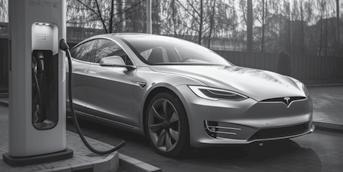
Government of Quebec 53%
19,027 km
Battery electric vehicles in Canada travelled more kilometres in 2023 than traditional internal combustion engine vehicles (16,618 km).
Pew Research Center
$9.78
The cost to fuel an entry-level ICE vehicle per 100 purposeful miles. It would cost $12.55 for the same EVs charged mostly at home and $15.97 when charged mostly at public stations
Pew Research Center



